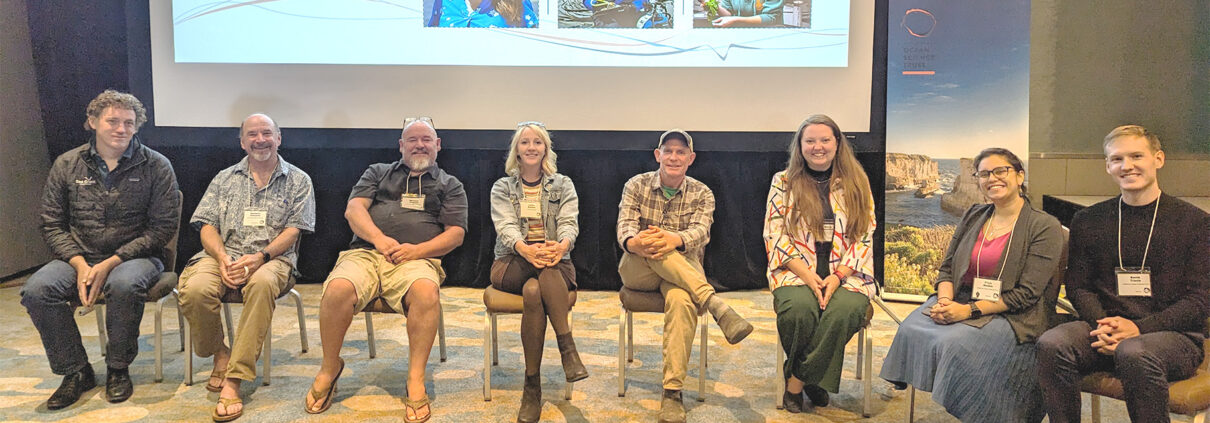Science Officer Kevin Travis and Science Engagement Specialist Dr. Priya Shukla hosted a Special Session on Restorative Aquaculture at the 104th Western Society of Naturalists (WSN) meeting this past weekend in Monterey, CA.
Restorative aquaculture is an emerging tool that could play a role in rehabilitating California’s marine ecosystems. It was a major topic at WSN, with the opening symposium focused on how commercial aquaculture infrastructure could be used to combat species declines and meet the dietary needs of coastal communities. Many poster and paper presentations covered the effects of environmental change on aquaculture operations, the challenges of experimental restorative aquaculture efforts, and several cutting-edge methods that could improve the outcomes of such endeavors.
Speakers in OST’s Restorative Aquaculture Special Session discussed various examples of restoration aquaculture, challenges these ventures face, and potential solutions for overcoming them:
- Dr. Luke Gardner (California Sea Grant & Moss Landing Marine Labs) mentioned the need for a shared vocabulary around restorative aquaculture
- Dr. Mike Graham (Monterey Bay Seaweeds & Moss Landing Marine Labs) shared that the development of seaweed culturing techniques for the culinary industry could be repurposed for growing giant and bull kelps
- Dr. Gary Fleener (Hog Island Oyster Company) discussed their collaboration with Sunken Seaweed to grow bull kelp in Humboldt Bay and ranch wild purple urchins that are decimating California kelp forests
- Dr. Betsy Mansfield (Florida State University) assessed the trade-offs for co-managing aquaculture operations and small scale fisheries
- Dr. Matt Edwards (San Diego State University) showcased the role microbial communities play in fostering the growth of farmed and wild kelps
The subsequent panel discussion included Leslie Booher (Sunken Seaweed) and explored management considerations, growth opportunities, information gaps, and the role of aquaculture in Tribal sovereignty. Some main messages included:
- A novel regulatory pathway may need to be developed for restorative aquaculture that differs from restoration and commercial aquaculture efforts
- Seaweeds could be employed for carbon sequestration and bioremediation
- When co-culturing species, it may be useful to mimic the natural environment
- Restorative aquaculture will require innovation, thus investing in expertise (such as Sea Grant extension specialists) is necessary
- Fishermen should be included in conversations about siting aquaculture farms to minimize conflict
- Understanding how existing aquaculture infrastructure can support Tribes requires respectful participation and acknowledging that different ways of knowing can complement western science, while not always aligning with it
Building off this session, Ocean Science Trust will continue to explore the policy, management, and science-informed benefits of seaweed farming in California.




